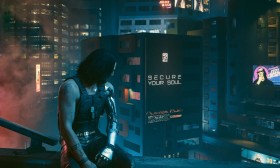When FromSoftware’s Demon’s Souls first emerged on the PlayStation 3 in 2009, it was a cult classic—a game revered for its punishing difficulty, intricate world design, and haunting atmosphere, yet hampered by technical limitations. Over a decade later, Bluepoint Games, in collaboration with Japan Studio, undertook the monumental task of remaking this foundational title. The result is nothing short of spectacular—a masterclass in how to revitalize a classic while honoring its soul. The Demon’s Souls remake is defined by its visual overhaul, a transformation so profound that it recontextualizes the entire experience without betraying the original’s essence.
From the moment players step into the Nexus, the visual leap is staggering. Bluepoint rebuilt the game from the ground up, utilizing a custom engine tailored to harness the full power of the PlayStation 5. Every texture, model, and environmental detail has been reimagined with an almost obsessive attention to detail. The original’s foggy, low-resolution aesthetic—once a necessity of hardware constraints—is replaced with breathtaking clarity and depth. Stone walls are now etched with centuries of decay; armor glints with realistic wear and tear; torches cast dynamic, flickering shadows that dance across grimy corridors. This isn’t merely a resolution bump or a fresh coat of paint—it’s a comprehensive re-envisioning.
The power of the PS5 enables real-time ray tracing, high-resolution assets, and a consistent 60fps performance mode (or a cinematic 4K/30fps option), but the true magic lies in how these technologies serve the game’s mood. Boletaria feels more oppressive, more tangible, and more terrifying than ever. The Valley of Defilement’s poisonous swamps are now viscerally grotesque, with murky water reflecting the bleak sky and grotesque creatures lurking just beneath the surface. The Tower of Latria’s prison cells are dripping with moisture and despair, each rusted chain and distant wail amplified by the visual fidelity. Bluepoint understood that the horror of Demon’s Souls is environmental, and they weaponized the new hardware to heighten that dread.
Character and enemy designs have undergone similarly radical transformations. The original’s designs, conceived by FromSoftware’s creative leads, were often interpreted through the lens of technical limitations. Bluepoint took these concepts and rendered them with frightening realism. The Fat Official is no longer just a bloated figure—he’s a grotesque spectacle of gluttony, with palpable weight and repulsive texture. The Flamelurker, a fan-favorite boss, is a symphony of particle effects and molten fury, its movements more fluid and terrifying. Even the humble Dregling enemies feel more nuanced, their jerky animations replaced with motions that are both more lifelike and unnerving.

Yet, the most debated aspect of the visual overhaul is its artistic reinterpretation. Bluepoint made deliberate choices to adjust the art direction in certain areas. The original game had a distinct, almost minimalist aesthetic—a starkness that felt intentional. Some purists argue that the remake, in its pursuit of realism, occasionally loses that starkness. For example, the Vanguard demon’s new design is more detailed but arguably less iconic than the original’s almost abstract portrayal. Similarly, the atmosphere of the Shrine of Storms has been changed from a pale, almost dreamlike haze to a more conventionally realistic stormy coastline. These changes are not inherently inferior, but they reflect a different interpretive lens. Bluepoint opted for a more grounded, high-fantasy realism compared to the original’s bleak, almost mythic ambiguity.
Where the remake truly excels is in its use of visual storytelling. Environmental details now whisper secrets and histories that were once only implied. Broken statues in the Nexus hint at a deeper lore; bloodstains and wreckage in the Boletarian Palace tell silent tales of failed invasions and desperate last stands. The remake also introduces “Fractured Mode,” a mirror-flipped version of the world, but it’s the default visual experience that feels the most narratively rich. The light and shadow play not just as technical showcases, but as narrative tools—hope is literally snuffed out in darker areas, while moments of respite are bathed in subtle, earned warmth.
The impact of this visual overhaul extends beyond mere spectacle—it directly enhances gameplay. The improved clarity allows players to read enemy telegraphed attacks with more precision, making combat feel more responsive. The intricate level design, always a hallmark of the series, is now easier to navigate thanks to better visual cues. Hidden paths, traps, and ambushes are still present, but the environment communicates more effectively, rewarding observant players without sacrificing challenge.
In conclusion, Bluepoint Games’ Demon’s Souls remake is a landmark achievement in video game preservation and enhancement. Its visual overhaul is not just a technical showpiece for the PlayStation 5; it is a thoughtful, passionate re-imagining that respects the source material while fearlessly expanding upon it. By marrying cutting-edge technology with artistic intent, Bluepoint has managed to both reintroduce a classic to a new generation and give veteran players a compelling reason to return. The soul of Demon’s Souls remains intact—its melancholy, its challenge, its mystery—but it now resides in a body that is more beautiful, brutal, and alive than ever before.














